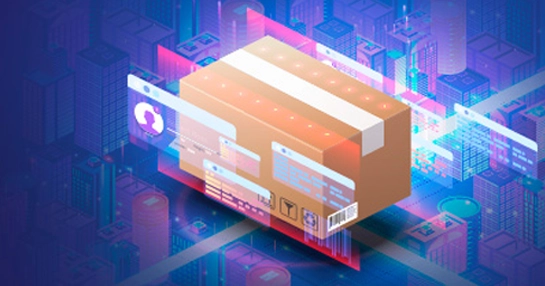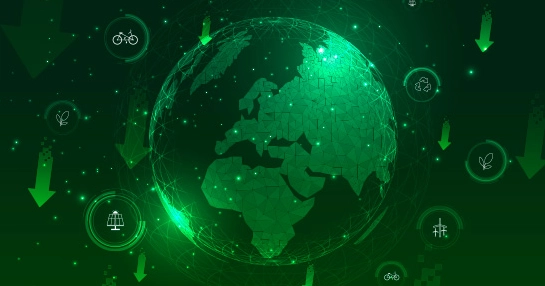CONTENT
What is e-Procurement?
E-Procurement is a process through which organizations procure goods and services electronically. It can save time and money and prevent potential errors or mishaps during the procurement process. Much has changed since the days of paper-based procurement.
The more quickly and efficiently an order can be processed, the less it costs; so there is a clear emphasis on speed and accuracy. For example, with e-Procurement, you will already have quotes and approvals before even creating a purchase order. All this saves time for enterprises. e-Procurement cuts down on the negotiating process, where you're dealing with suppliers and trading partners, who could be anywhere in the world. In business, time is money, and for this reason, much effort is put into reducing staff times that could be put to better use.
Today, e-Procurement is not just for large businesses with expansive purchasing departments. Even mid-market companies and small businesses should consider using e-Procurement to streamline their procurement process. Several tools and technologies such as online auctions, web-based procurement systems and purchasing platforms, make the procurement experience much more tactile.
Ready for Growth? GEP Has the Answers
Transform your business with our AI-powered procurement and supply chain software and services
Steps in e-Procurement
Five Steps You Need to Follow
The process occurs in stages when an organization exchanges information with external suppliers.
E-Informing
The first stage is called e-informing, which means exchange of information from one party to another, usually across units and external parties.
E-Sourcing
e-Sourcing refers to pre-qualifying all suppliers, allowing a company to see which are most qualified for evaluation. This process coincides with defining your organization's business requirements and organizational goals.
E-Tendering
During the third stage, a company makes in-depth assessment of potential suppliers. They may implement strategies to ensure it's transparent in their assessment. E-tendering provides support in the selection phase of tendering and acts as a communication platform between purchasers and suppliers. It covers the complete tendering process, from creating requirements to contracting. E-tendering helps reduce legal errors, provides clear audit trails, and improves efficiency in tactical procurement processes. Some UN entities use e-tendering, such as UNDP-IAPSO and UNHCR, when they need to formulate long-term agreements for vehicles, tents, motorcycles or pharmaceuticals.
E-Auction
In a traditional auction, the seller is in control because they set the contract terms and negotiate prices. They sell their items to the highest bidder. The buyer can do a reverse auction where they ask for bids from suppliers and get the lowest by accepting it. There are more potential buyers in an online auction or e-Auction, so sellers can't be as restrictive.
E-Ordering
Product ordering is the final step in the e-Procurement process where a business's employees can access and place orders for products. Companies usually use a digital catalog to store their rendered contracts to make it easier for new employees to find information quickly
Procurement Is Navigating a Tech Tsunami (and It’s Upending How You Work)
Don’t leave wondering. Get the GEP 2025 Procurement & Supply Chain Tech Trends Report.
Which are the Key e-Procurement Tools?
Several categories of specialized tools that constitute the contemporary e-Procurement technology landscape include source to contract, procure to pay, spend analysis, SRM, and contract lifecycle management:
Source-to-Contract (S2C) platforms facilitate strategic sourcing activities through comprehensive supplier discovery, RFx management, and contract lifecycle management capabilities. These platforms ease up the entire process and provide enhanced visibility and control.
Procure-to-Pay (P2P) systems manage the transactional aspects of procurement, including requisitioning, purchase order management, receiving, and invoice processing. These integrated solutions automate routine procurement tasks while ensuring policy compliance and spend control.
Spend analysis tools provide complete visibility into organizational expenditure through data aggregation, cleansing, classification, and visualization capabilities. Raw spending data gets transformed into actionable intelligence, which in turn drives strategic decision-making.
Supplier Relationship Management (SRM) platforms centralize supplier information, performance metrics, risk assessments, and collaboration tools. These solutions improve supplier oversight, improve collaboration, and also increase supplier value.
Contract Lifecycle Management (CLM) systems manage the complete contract process, right from creation through execution and ongoing management. These specialized tools improve compliance, minimize risk, and maximize realization of value from supplier agreements.
Electronic invoicing solutions automate invoice receipt, validation, approval, and payment execution with advanced capabilities such as three-way matching and early payment discount capture. The solutions also provide domain-specific functionality for complex procurement categories such as transportation and temporary labor.
What are the Main Functions of e-Procurement?
Critical functions that comprise comprehensive e-Procurement solutions in organizations include requisitioning, strategic sourcing modules, contract management, order management, invoice processing, payment management, supplier relationship management.
Requisitioning Functionality: It enables employees to start purchase requests through user-friendly interfaces with guided item selection, catalog management, and configurable approval workflows. This helps the procurement team streamline process.
Strategic Sourcing: It helps in supplier discovery, RFx management, reverse auctions, and bid evaluations through digital platforms in order to enhance competition and ease the selection processes. These capabilities in turn make traditional sourcing a data-driven process.
Contract Management: This functionality centralizes contract creation, negotiation, execution, and monitoring. This ensures compliance with terms and maximizes realized value from supplier agreements. Advanced e-procurement solutions often incorporate contract intelligence features to maximize opportunities.
Order Management: This capability converts approved requisitions into purchase orders, facilitates order tracking, and manages changes while maintaining complete procurement documentation. This function ensures accurate fulfillment of organizational requirements through standardized processes.
Invoice processing: Invoice processing as well as payment management automate invoice receipt, validation, approval, and payment execution. They often incorporate three-way matching to verify alignment between purchase orders, receipts, and invoices.
Supplier Relationship Management: SRM helps enterprises centralize supplier information, performance metrics, risk assessments, and collaboration tools in order to optimize supplier interactions.
Finally, end-to-end analytics capabilities transform procurement data into actionable insights through spend visibility, performance dashboards, and predictive analytics.
Benefits of e-Procurement
When done correctly, e-Procurement can bring in many advantages to businesses, including saving time and money, improving communication and collaboration, and reducing stress levels. Here are five e-Procurement benefits:
Time Savings
E-Procurement can save businesses time by automating the procurement process and eliminating the need to contact multiple vendors. Furthermore, e-Procurement tools can track purchase data so that you can better manage costs and optimize your procurement strategy.
Increased Efficiency
E-Procurement tools can help streamline the procurement process by automating the gathering of the necessary information from suppliers and facilitating the submission of bids. It can reduce the time needed to review proposals and make purchasing decisions.
Improved Communication and Collaboration
By making all procurement activities electronic, businesses can improve communication between different departments and reduce time wasted on redundant tasks. Additionally, e-Procurement tools can help reduce misunderstandings and coordination issues by providing consistent documentation across departments.
Reduced Risk
By using e-Procurement, businesses minimize the risk of potential scams or fraud by ensuring that products and services meet specific requirements. It reduces the possibility of costly mistakes or problems down the road.
Increased Compliance with Legal Requirements
By using e-Procurement tools, businesses can ensure that they're meeting all applicable legal needs while conducting their procurement activities.
Additional Read: Traditional Procurement vs e-Procurement
Types of e-Procurement System
If you're looking to streamline your procurement process, you'll want to use an e-Procurement system. Here's a lowdown on the most common e-Procurement types:
EDI
One of the best features of the EDI software is that two different organizations can exchange messages with each other. EDI sends messages between organizations, batching the notifications with other messages. It speeds up the process and is essential when working with specific types of messages, such as order confirmations or invoices. It is primarily implemented by close networks, unlike open networks such as the internet.
ERP Systems
ERP systems are one of many electronic procurement tools and applications. These software and systems take care of all the administrative tasks a company might be dealing with, such as the manufacturing process, logistics, distribution, and shipping invoices. ERPs help with sales, delivery, billing production, inventory management and human resources.
Online Bidding
This is the most popular type of e-Procurement system because it's simple to use and provides a centralized way to manage bids from different suppliers. However, online bidding can be slow and cumbersome, and tracking spending cannot be easy.
Email Bid Watching
Email bid watching is similar to online bidding but allows suppliers to submit bids electronically through an email notification system. This system is faster and more efficient than online bidding, but tracking spending can be more difficult.
Piping
Piping is a more advanced form of e-Procurement that allows suppliers to submit bids through secure pipes instead of emails. This method is faster and more efficient than email bid watching, but it can be more complicated to set up and use.
Web-Based Procurement
Web-based procurement systems are similar to email bidder watching, allowing suppliers to submit bids through an email notification system.
How Enterprises Can Choose the Right eProcurement Platform
Today’s enterprises expect their procurement organizations to drive greater strategic value. The ability to accomplish this is tied directly to how efficiently procurement manages its end-to-end operations and how well it can unlock key insights across its operations. But relying on manually driven legacy or in-house technologies, with their inherent limitations, can’t provide procurement with either the visibility or the fluidity that is mandated from the function in the digital-first era.
This is where e-Procurement software makes a huge difference by helping organizations achieve procurement transformation through smart automation and analytics. The outcomes: improved visibility, compliance and decision-making across source-to-pay (S2P) operations.
Here are some important pointers about our e-Procurement Services.
Integration With Legacy Systems
The ability of e-Procurement software to integrate with existing systems is absolutely critical. Cloud-based eProcurement solutions are increasingly, and not surprisingly, in demand today as they can seamlessly integrate with enterprise resource planning (ERP) systems. Their ability to “play nice” with legacy systems, as well as adapt to existing business structures, makes them a highly effective and economical solution.
Advanced Data Reporting
In an era where data has become procurement’s most prized asset, cloud-based e-Procurement technology that unifies purchasing and accounts payable presents decision-makers with insights and visibility that can reveal roadblocks and new avenues for growth. Whether that involves forecasting cash flow, understanding preferred supplier payment methods, or identifying potential fraud, advanced reporting through simplified procurement dashboards will go a long way in helping leaders effectively plan and strategize.
Mobile Procurement Technology
Cloud combined with mobility can produce better results for procurement organizations. Mobile procurement technology drives S2P efficiency while improving collaboration. It paves the way for buyers and suppliers to coordinate more effectively and easily. Mobile-native procurement technologies prioritize “collaboration” as an intrinsic feature, reinforcing strict security and eliminating the need to share sensitive information via email.
Application of Emerging Technologies
It’s generally acknowledged that technologies such as artificial intelligence (AI), analytics, robotic process automation (RPA) and blockchain can impact procurement in myriad ways, delivering improved results across end-to-end operations. eProcurement platforms like GEP SMART™ can leverage and integrate new technologies offer a huge advantage to enterprises in terms of their ability to drive rapid innovation and transformation.
The Right Buyer-Supplier Match
Every organization is unique in terms of the scale of its operations, the nature of its processes, and the industry that it operates within. This means that companies tend to engage providers whom they see as an extension of their business, and who complement their core strategies and requirements. Buyers should look to partner with flexible technology providers who can customize their product to meet the exact needs of the buying company. A software system that has the right number of features — not too many, not too few — and is in line with the business strategy of the organization is more likely to serve the ultimate purpose, and therefore to deserve the label of “solution.”
Total Cost of Ownership (TCO)
It’s imperative that enterprises consider the TCO, including implementation and integration costs, change management costs, scalability, and other factors. Overall costs should be compared with the potential savings resulting from reduction in unregulated buying, reduced processing times and accelerated payments.
Conclusion
E-Procurement will undergo massive transformation on the back of emerging technologies as well as changing business requirements. Artificial intelligence and machine learning will continue to automate complex procurement decisions, while enabling more sophisticated spend pattern analysis.
Blockchain technology will revolutionize supply chain transparency, contract execution, and payment security through unique transaction records and smart contracts. Plus, IoT-enabled predictive procurement capabilities will leverage real-time inventory monitoring and automated replenishment for further process optimization.
Advanced mobile capabilities will enable tracking of procurement activities from anywhere, while advanced analytics aid strategic decision-making with its deep insights.
All of these technologies will together play a big role in transforming procurement from a transactional function to a strategic differentiator delivering substantial competitive advantage.











